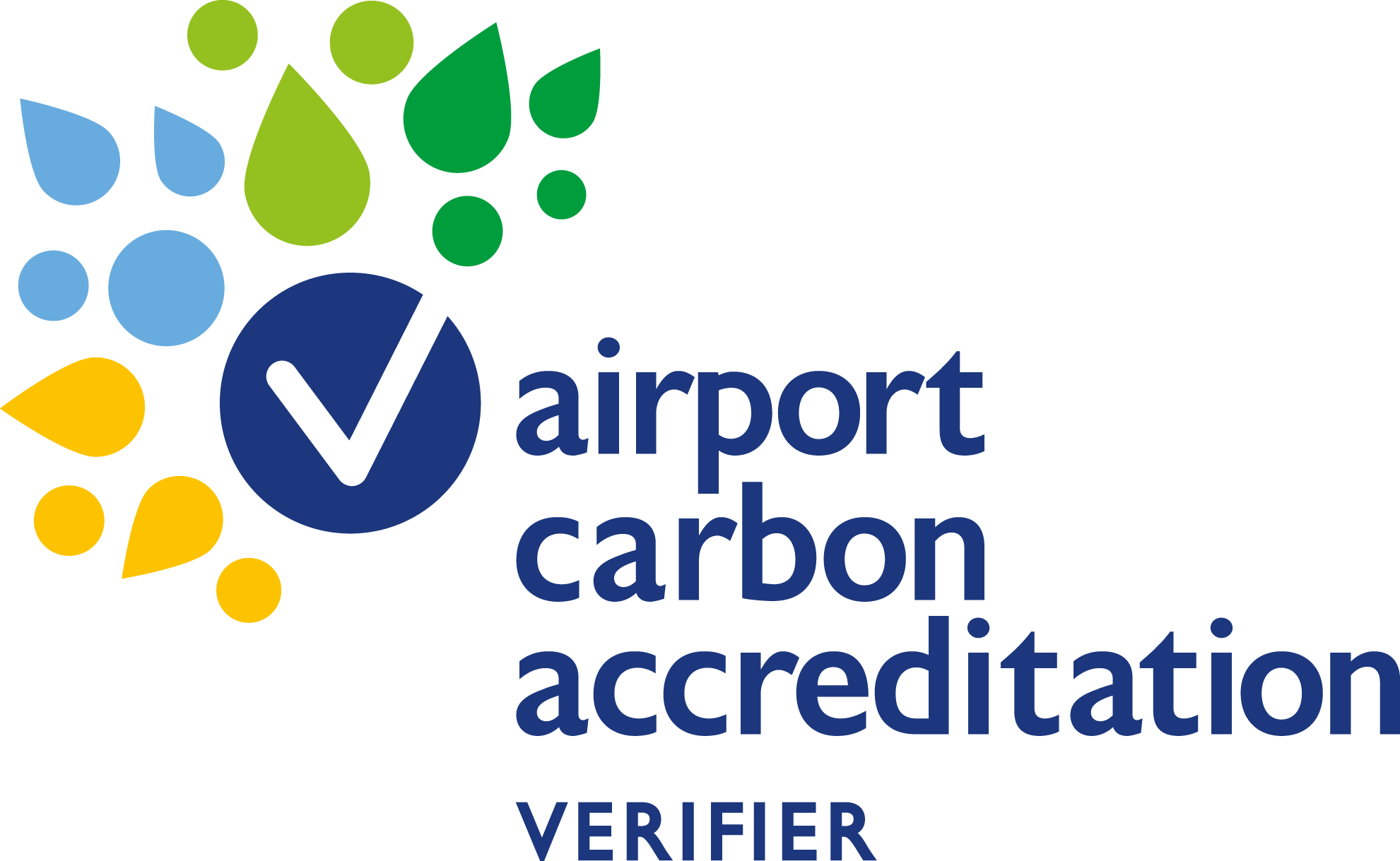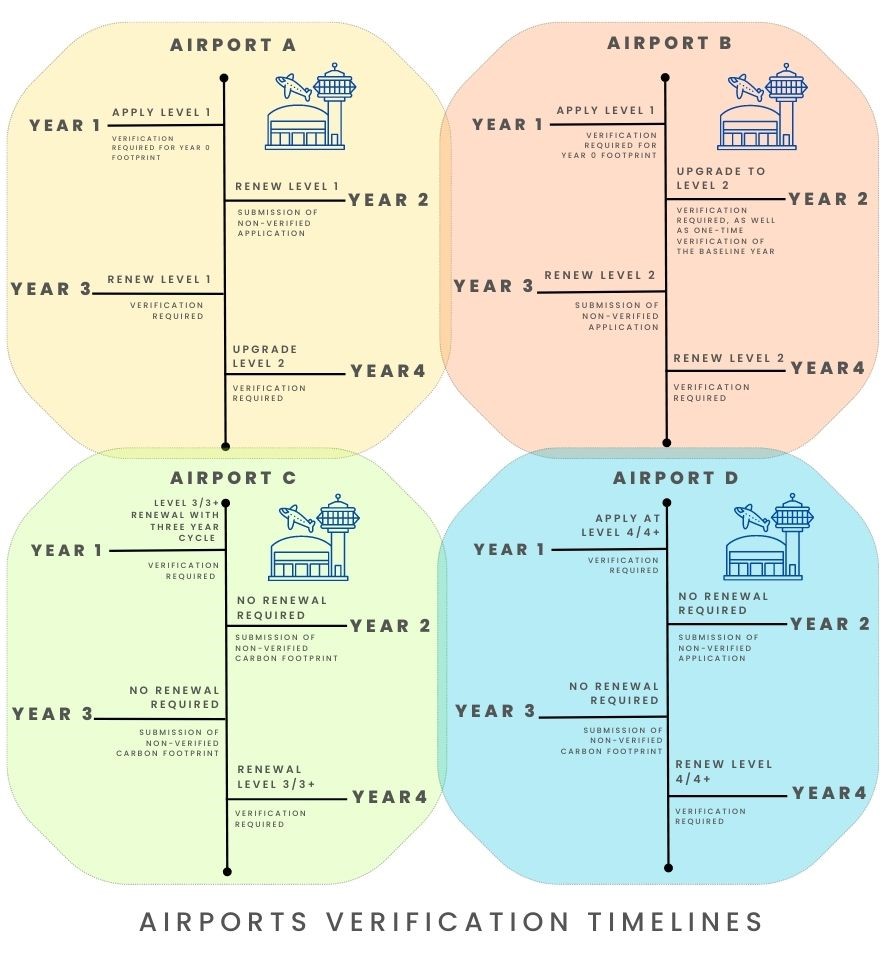Airport Carbon Accreditation (ACA) Verification
Verifavia offers carbon emissions verification services for Airports applying for Airport Carbon Accreditation (Levels 1, 2, 3, 3+, 4, 4+)
Verifavia is the leading carbon emissions verification body for airports under the ACA programme with more than 150 different airports audited at all levels of ACA!

'Verification is our expertise and airports are our passion!'
Overview
In order to ensure that information provided by airports is fair and accurate
representation of the activities at the airport and the carbon footprint data provided, airports must have their information independently verified by a third-party verifier.
Verification of the carbon footprint and other requirements of the scheme is mandatory for all levels of ACA. The primary aim of verification is to provide confidence to users that the reported information and associated statements represent a faithful, true and fair account of a company’s GHG emissions.
The role of verification is to reach an opinion with reasonable level of assurance that:
representation of the activities at the airport and the carbon footprint data provided, airports must have their information independently verified by a third-party verifier.
Verification of the carbon footprint and other requirements of the scheme is mandatory for all levels of ACA. The primary aim of verification is to provide confidence to users that the reported information and associated statements represent a faithful, true and fair account of a company’s GHG emissions.
The role of verification is to reach an opinion with reasonable level of assurance that:
- the declared carbon (GHG) footprint (or improvement metrics, if requested):
- is materially correct and is a fair representation of the GHG data and information
- is prepared in accordance with the ACA rules, the GHG Protocol and the ISO 14064-1
- meets the minimum expected Scope of emissions
- if required (i.e. where not presented in English) the application assessment form and supporting documents are valid and meet the requirements of the scheme
Our accreditation
Verifavia is recognized by WSP Environment & Energy (the Programme Administrator) as an approved independent third-party verifier that can provide GHG verification services to airports applying for the Airport Carbon Accreditation certification (levels 1, 2, 3, 3+, 4, and 4+).
Verifavia can conduct the verification according to ISO 14064-3, which is a pre-requisite to ISO 14065. Verifavia also follows the GHG Protocol, which is the required GHG accounting tool.
We strive to work as efficiently as possible while maintaining the highest degree of data accuracy and the highest level of customer service!
> Click here for more information about our accreditation
Verifavia is recognized by WSP Environment & Energy (the Programme Administrator) as an approved independent third-party verifier that can provide GHG verification services to airports applying for the Airport Carbon Accreditation certification (levels 1, 2, 3, 3+, 4, and 4+).
Verifavia can conduct the verification according to ISO 14064-3, which is a pre-requisite to ISO 14065. Verifavia also follows the GHG Protocol, which is the required GHG accounting tool.
We strive to work as efficiently as possible while maintaining the highest degree of data accuracy and the highest level of customer service!
> Click here for more information about our accreditation
Verification process
The verification process involves the analysis of the methodologies, data collection techniques, calculation processes, emissions factors, etc. that were used to develop the carbon footprint report.
The process also involves the identification of the boundaries, emissions sources, organizational structure, as well as the analysis of the airport's data accounting and quality control systems.
Interviews with the key personnel involved in the carbon management activities of the airport as well as of the operators of the emissions sources are also conducted in order to confirm the adequate implementation of the various control and reporting procedures.
The verification applies to Scope 1 and 2 emissions at Levels 1 or 2, Scope 3 emissions at Levels 3 or 3+ and additional Scope 1 & 3 emissions at Levels 4 or 4+.
At levels 2 and above, an airport must provide supporting evidence to demonstrate that the carbon management plan (and at levels 3 and above, evidence of the stakeholder's engagement in the carbon strategy) has been implemented effectively.
Verification schedule
Airports are required to submit a verified carbon footprint on their initial application, and
every second year subsequently for the level for which they are accredited (third year in the case of Level 3 or 3+ renewals pending at least two successful renewals).
Airports participating at Level 3 or 3+ on a three-year renewal cycle are required to submit
verified data every third year.
If an airport upgrades from one level to another, it must submit a verified carbon
footprint, regardless of whether or not the previous year’s footprint was verified.
Furthermore, an airport entering at or upgrading to Level 2 and beyond shall also verify that an effective reduction in emissions occurred for the year under verification compared to the rolling average of the three preceding years, as well as the progress towards the set target (at least for Scope 1 and 2 emissions). This is described in the table below:

Source: Airport Carbon Accreditation









